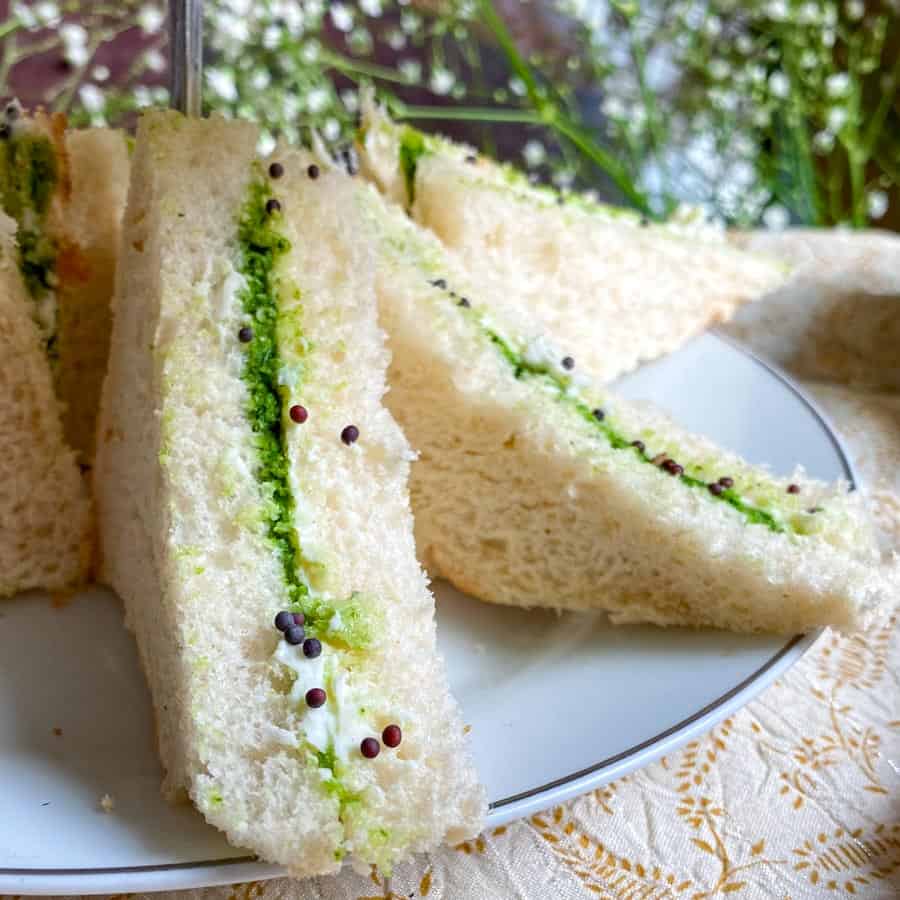Don’t worry though! I’ve recipe tested this rose chai with numerous methodologies from using rose petals to including rose essence to finally come up with this sweet rose chai that makes me feel like dressing up in my finest summer dress and hosting a tea party with my girlfriends.
Ingredients
Black CTC tea - It’s important to use black CTC tea for a strong cup of chai. You can learn more about this type of tea, its substitutes, and why it makes the best cup of chai in this detailed blog post. However, if you want to skip right to the brand recommendation, I suggest Red Label for your chai needs. Fennel seeds - Mild licorice-y flavor. Cardamom pods - Warm and sweet taste that compliments the rose. Rose water - Gives a light, bright, and consistent rose-y flavor to chai. More on this ingredient down below. Water and Milk - I use a 1:1 ratio of milk to water in my chai for a creamy result. Tweak the ratio for your perfect cup.
Rose petals vs. rose water vs. rose essence
Rose petals - Food-grade rose petals that are dried and packaged. There are so many different varieties of rose petals from dark rose to light rose, all of which have slight variations in taste. Rose water - Rose water is created by a distillation process where fresh rose petals are steamed and the resulting condensation is the rose water which has the rose’s essential oils. Rose essence - Rose essence is a concentrated substance that is made with extracted rose oil and alcohol.
In terms of potency, rose petals are the most potent followed by rose essence and then rose water. Rose petals get stronger the longer they steep in liquid and rose water and essence can be made stronger with the quantity added.
Why rose water is the best for rose chai
Rose water is best for rose chai because it has the most subtle and nuanced flavor, leads to a consistent-tasting cup every time, and results in a chai that is well balanced. When I’ve experimented with steeping rose petals, the chai would never be consistent. Steeping the rose petals for even a minute or two longer than needed can result in a chai that is too concentrated in rose flavor. In addition, rose petals are sold in bulbs, petals, and different varieties and each brand had a slightly different taste which resulted in different results every time. Rose essence is more potent than rose water and a little splash extra can push the chai over into the sickly sweet category. Rose essence is second best when it comes to making chai. If you want to use rose essence, use about half the amount of rose essence to the amount of rose water called in the recipe.
It is important to add rose water at the end
It is important to add rose water to the chai once you have turned off the heat. This is because the essential oils in rose water diminish when exposed to long periods of heat. So make sure to add the rose water as the last step in your chai making process.
Rose chai vs. other chais
Rose chai, although it has a couple of spices, really features the rose, whereas masala chai is made up of many spices. Rose chai uses rose water and crushed whole spices for a delicate chai whereas masala chai uses a chai spice blend to create a very spice-forward drink. Rose chai is milder and more floral and delicate compared to the spicier ginger chai.
What pairs well with rose chai
Rose chai is a delicate chai that I love serving at Indian tea parties or brunches. My two favorite things to pair with this tea are mini badam halwa croissants and cucumber and mint chutney sandwiches. The badam halwa croissants are a sweet breakfast treat that has a traditional badam halwa or saffron almond fudge spread in the center and gets its flaky texture from store-bought mini croissants. The cucumber and mint chutney sandwiches are the perfect tea time savory snack with flavor packed in with spicy cilantro-mint chutney.
Other posts like this you may like
Masala Chai Kesar Chai (Saffron Tea with Milk) Chai Spice Blend What is CTC tea? History of chai How to throw a chai party









